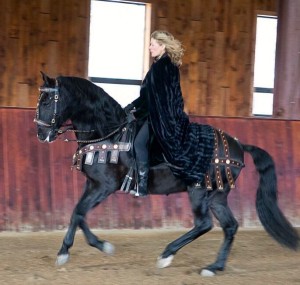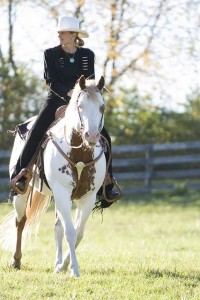Archive for the "Judging" Category
Zulu the Magnificent
Zulu owned by Athene Von Hirschberg looks magnificent in the armor provided by Lisa Oberman.
There is no pillow so soft as a clear conscience. French proverb
Be thankful for what you have and generous to all.
Happy Thanksgiving!
Flashback with Bella at Dressage at Devon
Great memories of training Bella for Diana Murphy of Best Sporthorses who has several more up and coming stars at her farm. Diana has a great eye for a Champion.
Judy Bradwell’s Tips for Buying a Horse
In choosing a horse there is no substitute for experience either acquired or ‘borrowed’.
If a vet is involved, so much the better, but always find one who is objective and
independent of the seller. The key is to find a horse that is suitable for both the rider
and its purpose.
Without a sound horse you have no horse, so in the selection process Soundness is
vital – don’t buy a horse which already has soundness problems as you can be sure to
encounter enough along the way!
When it comes to Conformation there are really 10 sections of the horse to consider,
in addition to Colour, (which should never be bad, but while chestnut mares have
dubious reputations some can be brilliant) and Type (meaning the horse should be
uphill and balanced and not be on their forehand, where they hit the ground too hard
to survive the rigours of training and competition).
• Head should be well-formed and intelligent with a big open eye, which is the
first thing one looks for.
• The horse should have a Good Front with the head and neck in proportion
and the head must sit correctly on a long rather than short neck.
• In Body the back should be short but not too short, and the chest and rib cavity
should be deep.
• Tail should be set well up the hind quarters and swing freely from side-to-side.
• Quarters should have plenty of width and strength.
• Hocks must be strong and well set, as competition horses put great weight on
the hind legs and hocks (look out for Thoroughpins – soft swelling on the
inside or outside of the hock; Spavins – bone enlargement on the side of the
hock; Curbs – a bony enlargement at the back of the hock. These all spell
weaknesses, though a false curb may be acceptable.).
• Front legs should not be light boned nor back at the knee. The knee itself
must be strong and flat and the pastern neither too short nor too long.
• Feet must be well-formed, matching and not too small, flat or upright.
• Wind must be clear and sound. A vet will confirm whether a horse has been
‘hobdayed’ or worse still ‘tied-back’, which are both operations to the larynx
aiding air flow.
• Teeth must meet correctly and be in reasonable condition. The teeth serve as
an accurate way to check the age of the horse.
Beyond Conformation the prospective buyer should look for a horse with good natural
Movement, while the horse’s Temperament is almost as important as its soundness.
Finding a horse with real natural Talent is something of an immeasurable, but look for
a horse with potential. Don’t be afraid to choose a horse in the rough, often
preferable to buying a dealer’s horse, turned out beautifully, which could be masking
a problem or flaw. Identify any Stable Vices upfront, be that Weaving – where the
horse moves from side-to-side, shifting weight from one foot to the other; Box
Walking – where the horse walks endlessly round the stable; Wind Sucking – where
the horse takes in air while sucking or biting the stable door; or Crib Biting – where
the horse bites on the door or other items in the stable. These can all adversely affect
the condition of the horse. Finally, there is Price which will be related to age,
experience, breeding, health and success. This must be related to affordability, both
the initial cost and the cost of training, maintaining, producing and competing.
Teaching Kids
<object
I greatly enjoy teaching kids to ride with confidence and trust in their mounts. Here is a lesson over our obstacle course which helps them build their confidence and teaches them to deal with any situation.
Count Every Stride

You have heard it from many trainers-ride every stride. This will eventually become automatic when you train yourself to count your strides. One of my greatest teachers, Tony Mason, taught me to count the length and width of the arena. He was adament about knowing the size of your arena and how to carve out space to work in when it was crowded with many horses. I imagine he learned this years ago when he was trained by his Master in Europe, when riders had to navigate among dozens of horses in small arenas. There was etiquette about how to pass one another and when to change direction.
If you learn to count the strides in your circles, you will eventually learn how to ride a perfect circle. This is not as easy as you might expect. I start all my students whether children or adults learning to count and it pays off quickly as they progress up the levels.
This image is of Ashley Cox riding Classy, winning the dressage test at Kent Horse Trials. If you are interested in lessons or have any questions, contact cari@cariswanson.com.
Ride with Feeling
Last week I was judging a schooling show with many talented riders. For the most part each ride was accurate, however they all would have improved dramatically if the rider was more relaxed and had more feeling in their seat and hands. This elusive idea of being one with the horse is difficult to explain but magic to feel. It takes a lifetime to learn how to ride correctly and each hour in the saddle is an opportunity to shift to that goal. Simply relaxing the shoulders in transitions and within the gaits is highly effective. Try this simple excercise and see if you achieve a more connected and relaxed feel. My grandmother used to say a good ride would make her feel high for days, better than any drugs!
From the Judges Box
Here are some of the most common faults seen from the judges box. They are simple to fix and ride correctly. Every horse at training level should be able to get at least a 7 on each movement if ridden correctly, regardless of the gaits. However, the rider should always be striving for higher marks.
Enter trotting on center line
Riders often overshoot the center line, drifting back to the correct line, sometimes losing balance and straightness. It is very easy to practice riding down center line. Remember that when you start to turn in the corner, continue to bend and turn with your eye on the judge, this will put you straight on center line. Also ask for a bit more trot so that you are entering with a sense of purpose and commitment. Finally remember to smile, the judges enjoy seeing riders having fun. More importantly when you smile, you relax your body which effects your horse. Remember do not override, less is more. The goal is to ride in harmony with your horse. Show the judge a dance rather than a drill.
Ride a Circle
Do not ride an ameba, a box or an egg. Learn to ride a proper circle. Have a friend video tape your schooling to see if you actually are riding a circle.
Do not rush your Halt
Establish your halt. Count to 5, exhale and relax. Very often the rider will halt beautifully and then rush off to the next movement. Slow everything down. Breathe.
Ride the Correct Diagonal
Again, keep your eye on the destination and ride with purpose and conviction to that letter, the diagonal line should be straight, balanced and the same rhythm. The new tests at training level allow posting trot, so do not disrupt the rhythm of your trot by switching the posting diagonal at X, wait until the corner at the end of the arena. Commit to the line, soften, breathe. Your scores will improve.
Extention of the Gaits
The USDF Glossary of Judging Terms describes the extention of all gaits as “stretching and lengthening of the outline and stride of the horse, and in trot and canter, an increased phase of suspension. The horse covers as much ground as possible with each stride maintaining nearly the same tempo and relatively uphill balance.
In walk, a pace which shows the maximum length of the stride and stretch and oscillation of the neck. The hind feet touch the ground clearly in front of the prints of the forefeet.”
Suspension is the period of time when none of the limbs are in contact with the ground. This is also the aerial phase. The canter and gallop have one aerial phase per stride, the trot has two per stride and the walk does not have any aerial phase.




